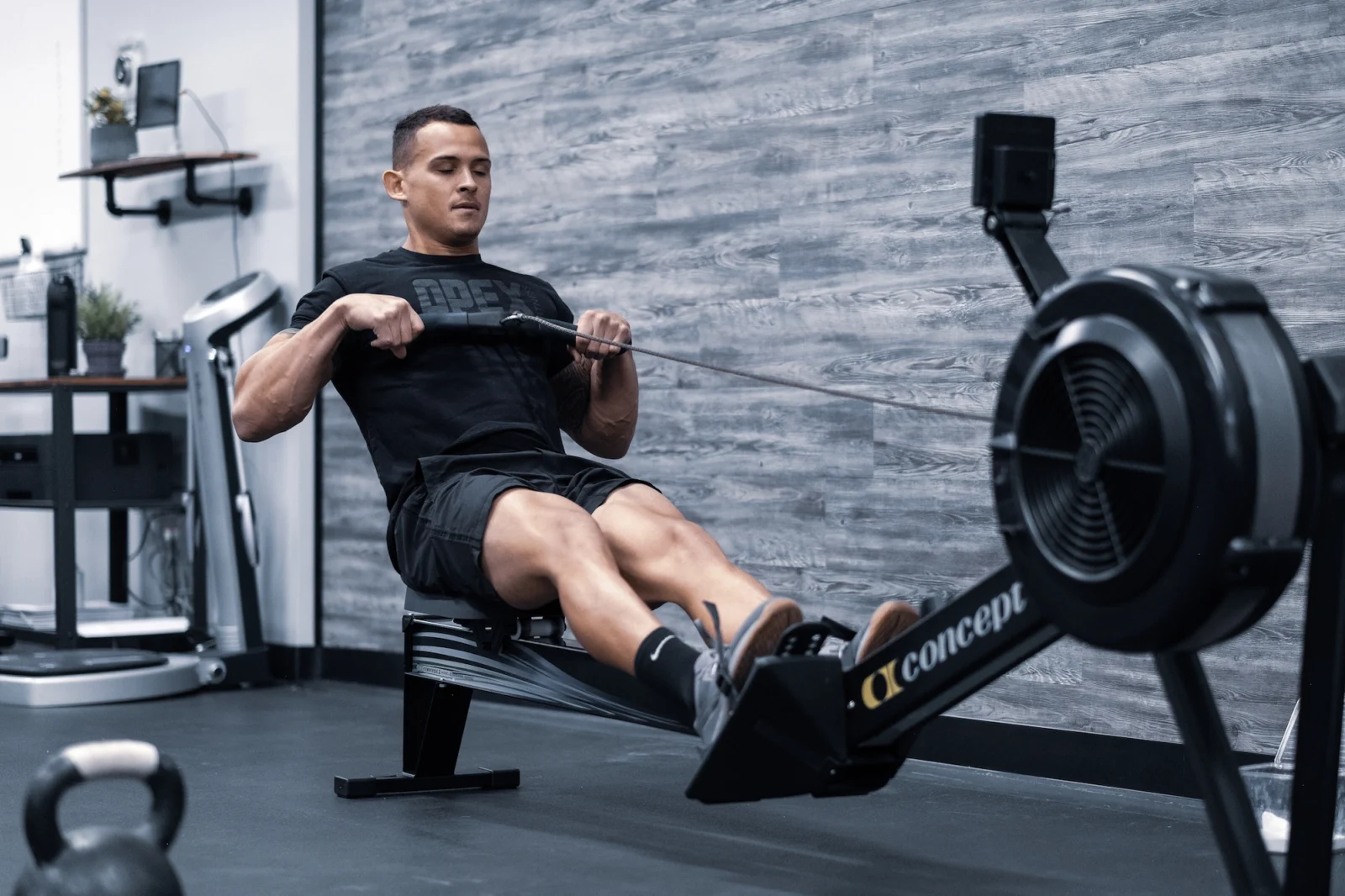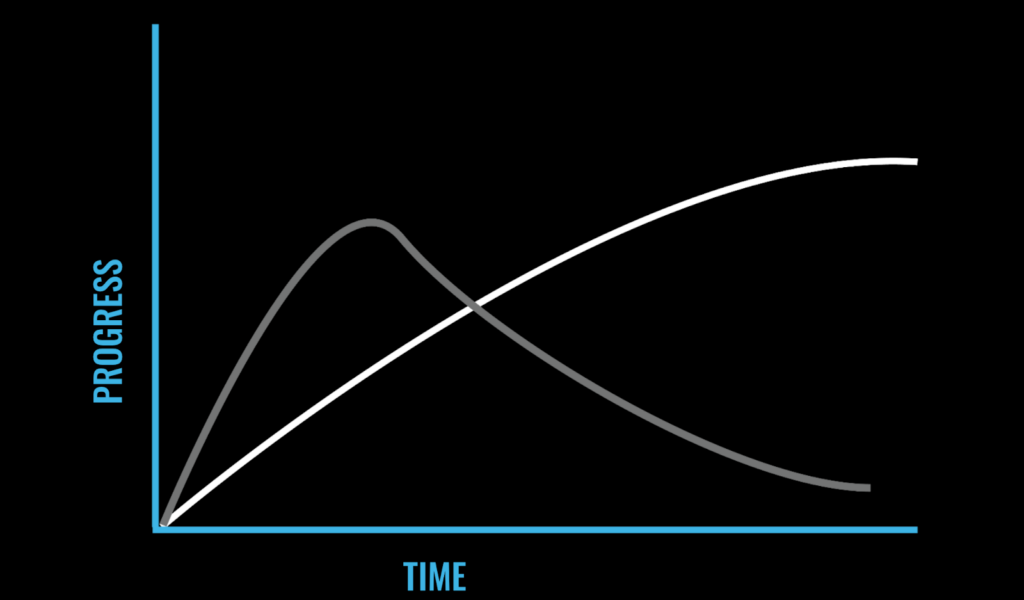Coaches Corner With Carl Hardwick: Simplifying Energy System Training

This principle-based framework for conditioning will help you design effective progressions for the aerobic and anaerobic energy systems
As a coach, one of your primary responsibilities is to design effective training programs that help your clients achieve their goals. When it comes to energy system training, however, things can get a bit complicated. With so many methods of incorporating metabolic conditioning, it can be challenging to create a training program that targets each system effectively without overwhelming your coaching brain.
To simplify energy system training, it’s essential to focus on the three primary energy systems: ATP-CP, glycolytic, and oxidative. To be clear, these systems function simultaneously during physical activity, but taking a simple, narrow approach that suggests biasing one system specifically through training is most practical.
You’ve probably heard the concept of health-span, referring to living a healthy life for as long as possible, not just simply staying alive for as long as possible, which is referred to as life-span. We take a similar approach to training at OPEX Fitness. Our aim is for people to be able to perform physical challenges for as long as possible—let’s call this their fit-span. Because of this, we have a bias towards longevity in energy system training programs.
The OPEX methodology teaches energy system training with long-term implementation in mind. This approach takes time and patience, as the goal is to do it as long as possible, not as intensely as possible.
The principles of energy system training can be simplified by focusing on the individual. Coaching principles transcend all, and if you can coach the individual, you can coach anyone. With that in mind, let’s take a closer look at the basics of the three energy systems.
ATP-CP (Resistance Training or OPEX Gain)
The ATP-CP system provides instant energy for intense activities up to 10 seconds. It uses stored creatine phosphate (CP) to quickly produce ATP for muscle contractions, making it an essential system for high-intensity activities such as sprinting and weightlifting.
Glycolytic (Anaerobic Training or OPEX Pain)
The glycolytic system, also known as the anaerobic system, converts stored carbohydrates to glucose and uses glycolysis to produce ATP. Unlike the ATP-CP system, it doesn’t require oxygen and can sustain energy for up to several minutes. However, it produces lactic acid, which can lead to fatigue and muscle soreness. It’s essential for activities that require short bursts of intense effort, such as jumping or throwing.
Oxidative (Aerobic Training or OPEX Sustain)
The oxidative system, or aerobic system, breaks down stored glycogen, fats and proteins using oxygen to create ATP through cellular respiration. This system has slower ATP production than the other systems but can sustain energy for longer periods. It’s the primary energy source for low-intensity activities such as walking, jogging or cycling.

*Source: OPEX Coaching Certificate Program (CCP)
Think of the Gain, Pain, and Sustain systems like a car. Gain is like the engine revving up for a quick sprint or acceleration. Pain is like when you push the car to its limits, burning rubber and feeling the engine roar. Sustain is like cruising on the highway, using less energy, but going for longer distances.
Defining progress is crucial in designing an effective energy system training program. Progression in fitness refers to the systematic increase in training load over time with the goal of stimulating physiological adaptations and improving performance. However, moving someone forward may mean different things to different clients. It could be improved performance, confidence, health, connection or consistency. Therefore, as a coach, it’s important to identify what progress means to your clients and design a training program that aligns with their goals.
OPEX Sustain
The OPEX Sustain model is the foundational framework for developing a strong aerobic system. This is achieved by breaking down glucose and fatty acids for ATP, which is the primary energy source for muscles. The benefits of developing a strong aerobic system extend beyond just endurance; it also supports the Gain and Pain systems. For example, the Gain system will benefit from improved recovery and intra-set performance through better aerobic efficiency and the Pain system benefits from a robust aerobic foundation to build upon (crawl before you walk).
Sustain progression can be done through two models: slow and easy or fast and powerful. Both models improve aerobic capacity, but slow and easy training teaches patience, consistency and focus while emphasizing the importance of staying committed to long-term goals. Meanwhile, fast and powerful training stimulates the heart to pump more efficiently, resulting in increased oxygen delivery to the muscles.
At OPEX, we start long and slow to develop a solid aerobic base and build upon that aerobic base by progressing to fast and powerful.
OPEX Pain
We understand that progress in fitness should be a long-term process. Quick fixes may lead to short-term results, but sustainable models based on delayed gratification and consistent effort lead to long-term success. This is illustrated by a visual representation of the trade-off between quick fixes and sustainable progress over time below, the gray representing high-intensity fitness and the white representing sustainable fitness.

*Source: OPEX Coaching Certificate Program (CCP)
In contrast to the Sustain progression, the Pain progression is relatively simple. It involves progressing from short and powerful exercises to longer, less powerful ones, with the goal of inducing metabolic stress. The focus is on developing repeatable performance, rather than sustainable performance. Training is preferred over testing, and the time to peak is much shorter than with the Sustain progression.
To progress through the Pain progression, individuals need a higher barrier of entry, including a certain level of strength, a well-built foundation and the intention to push themselves to the limit. However, it’s important not to stay in the Pain progression for too long, typically no more than 8 weeks at most. On the other hand, it’s essential to utilize the Sustain system regularly, as it provides a sustainable foundation for long-term progress and success.
At OPEX, we take a bias towards longevity in our energy system training programs, which means that we focus on sustainable, long-term progression. This approach takes time and patience, emphasizing the goal of being able to perform physical challenges for as long as possible, not as intensely as possible.
Join our Coaching Certificate Program (CCP) and gain the tools to implement effective energy system training programs with any client, regardless of their goals. CCP offers a deep dive into energy system training, as well as other coaching principles that will help you become an expert coach. With the Gain, Pain and Sustain systems in mind, you’ll learn how to design programs that not only improve performance but also support long-term success.
See Carl’s previous column here.
Next week’s column: Overcoming Program Design Mistakes
Carl Hardwick, CEO of OPEX Fitness & CoachRx, is a strong advocate for bringing honor to the coaching profession and raising the value of all fitness coaches. He lectures frequently about program design, business systems, and building a sustainable coaching career. Follow him on Instagram @hardwickcarl and OPEX Fitness on YouTube



